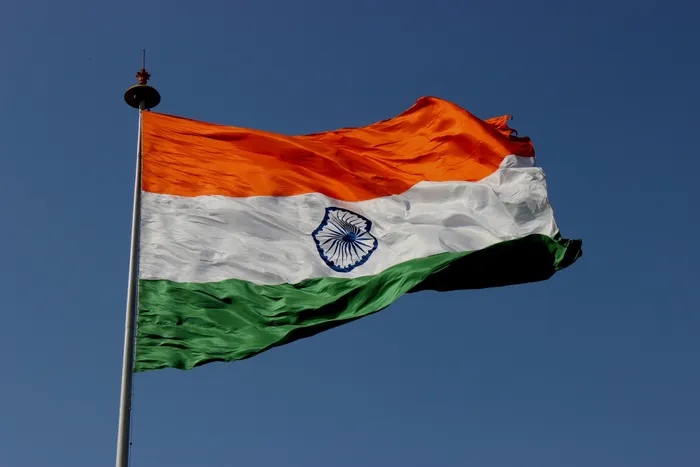India is the world’s fourth most equal society, says World Bank report

In a dramatic turnaround, India has emerged as one of the most equal societies in the world.
Image: File
In a dramatic turnaround, India has emerged as one of the most equal societies in the world, outshining major global economies like the US and China, and ranked as the fourth most equal society in the world.
According to the World Bank's Spring 2025 Poverty and Equity Brief, India with a Gini Index of 25.5 is close to joining the global club of “low inequality” countries - the Slovak Republic (24.1), Slovenia (24.3), and Belarus (24.4), and more equal than every member of the developed G7 and the wider G20.
Shockingly, the world’s largest economy, the US, falls within the “high inequality” group of nations with a Gini score of 41.1 while South Africa, with a Gini index of 63.0 is the world’s “most unequal” society.
The World Bank ranking pitches India as a country with “moderately low” inequality. Moreover, India emerges as a more equal society than all the other 167 countries (excluding the top three) for which World Bank data is available. The country is 10 points higher than China, and 15 points higher than the United States.
According to the report, 30 countries have a “moderately low” score of between 25 and 30. They include four Nordic countries - Poland, Europe’s fast-growing economy, is at 28.9 while Belgium, the European Union’s headquarters, stands at 26.4, with the United Arab Emirates having a Gini score of 26.4. Countries with a Gini Index of 30 to 40 are deemed to have “moderately high” inequality, and the World Bank report places 87 countries, ranging from Nepal and Croatia to Jamaica and Sweden, in this category.
Nine G20 members - France at 31.2, Japan at 32.2, Germany at 32.4, the United Kingdom at 32.4, Italy at 33.7, Australia at 34.3, Indonesia at 34.9, the Russian Federation at 35.1, and China at 35.7 also fall within the “moderately high” inequality group. Switzerland has a Gini score of 33.8. A total of 32 countries, three of them G20 members, including the mighty US, scored a Gini Index of 40 or more, equating to “high inequality”. The other G20 members are Mexico at 43.5, and Türkiye at 44.5.
South Africa is the world’s most unequal society and falls within the “very high inequality category” of countries with a Gini Index of 45 and higher. Another BRICS country - Brazil (51.6) - is among the 19 countries that fall into this category. Guyana at 45.1, Zambia at 51.5 and Botswana at 54.9 also fall into the “very high inequality” segment. Ironically, many of these unequal societies are very rich in mineral resources.
New Delhi is understandably delighted by India’s improved Gini score from 28.8 in 2011, and the World Bank’s estimation of a 171 million Indians being lifted out of extreme poverty between 2011 and 2023, reflecting a sharp drop from 16.2 per cent to just 2.3 per cent during this period, based on the $2.15 per day global poverty threshold.
The country’s Press Information Bureau (PIB) said, “India’s strong standing on the Gini Index is not a coincidence. It is closely linked to the country’s sustained success in reducing poverty across both rural and urban regions. The Spring 2025 Poverty and Equity Brief by the World Bank highlights this achievement as one of the most significant in recent years.”
The PIB says India’s turnaround as the world’s fourth most equal societies is a testament to sound economic policies and government initiatives to close the equality gap, including expansion of financial inclusion; increased digital access; welfare delivery through Direct Benefit Transfers, improved healthcare equity, and strong support for marginalised castes/tribes, and women entrepreneurs. The transformation of India’s equality status is particularly striking because of its historical inequality.
The 'World Inequality Report 2022', placed the country among the most unequal countries in the world, with rising poverty and an 'affluent elite.' According to that report, the income inequality in India under the British colonial rule (1858-1947) was extreme, with a top 10% income share around 50%. Socialist-inspired five-year plans after India’s independence did help to reduce the country’s equality gap to 35-40% but poor post-Independence economic conditions led to deregulation and liberalisation policies, resulting in “one of the most extreme increases in income and wealth inequality observed in the world.”
Gautam Chikermane, the vice president at the Observer Research Foundation, postulates that the political focus on wealth redistribution before wealth creation was part of the reason for India’s success in closing the equality gap, writing, “Between 1977 to 2022, India’s Gini Index declined from 29.7 to 25.5, marking a shift towards using wealth creation as a lever for wealth redistribution. India can be seen as a geography where capitalism is not at cross purposes with democracy. This, he says, has ensured that, “India is the most equitable society it has had in the past 45 years.”
Fawzia Moodley is a freelance journalist